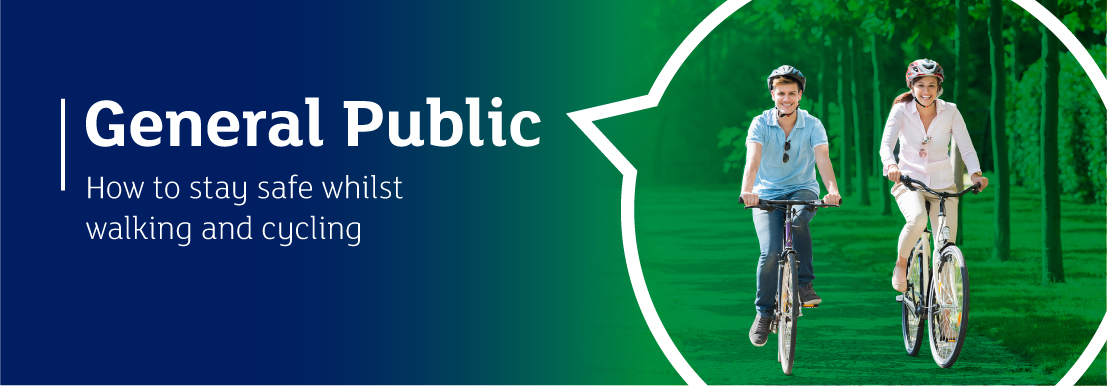
Disabled groups and active travel
How can disabled people be supported to walk or cycle more?
People living with disabilities have a right to be able to travel safely whether on the carriageway or on the pavement. Often, their needs are forgotten or dismissed and approaches, such as shared space or the installation of gates and barriers on walking or cycle routes, can be barriers to safer active travel for them. This section highlights key elements to consider around active travel and those living with a disability, as well as signposting to charities who are supporting disabled groups to walk or cycle safely.
The Equality Act 2010 includes a requirement that public authorities and organisations providing public services should make reasonable adjustments to ensure that people living with disabilities can access services, including the public realm. The Government supports equal access for all and has created guidance for the design of accessible public realm - Inclusive Mobility A Guide to Best Practice on Access to Pedestrian and Transport Infrastructure.
Walking and disability
The public realm, which is the streetscape for all road users, should be accessible for pedestrians who live with a disability. There are different issues which affect different disabilities. For instance, visually impaired pedestrians may have problems where cyclists and pedestrians use the same space for travel and may not be travelling in the same direction. Hearing impaired pedestrians will be reliant on visual clues to ensure their safety, so will need traffic lights to be working properly to ensure the safe crossing of a street. There are campaigns and research by UK charities supporting better access for pedestrians. Here are some examples:
-
Guide Dogs' Streets Ahead campaign includes a "Pavement Parking Campaign", that seeks to reduce pavement parking, which can have a major impact on people with visual impairment and other disabilities. The campaign calls for stricter enforcement of pavement parking laws and new measures to be introduced to discourage pavement parking, plus a ‘Street Clutter Campaign’, which is aiming to raise awareness of the issue of street clutter for those walking with visual impairment
-
Living Streets and Sustrans have conducted research and made suggestions around accessible streets for all. Walking for Everyone is their guide supporting national and local governments and organisations to help improve the lives of people, including the disabled, and make walking and wheeling more inclusive. Living Streets have also developed a guide around overcoming barriers for disabled people for everyday walking, which sets out ideas for making the public realm more accessible
-
Transport for All is a charity advocating for accessible transport and streets for those living with disabilities. They have a pavement pledge sign-up for local authorities, encouraging the removal of street clutter and more dropped kerbs to allow a better walking experience for those living with a disability.
Cycling and disability
Cycling can be one of the main transport options for those living with disabilities and health conditions, especially physical disabilities, who may not be able to walk for any distance. A recent survey by Wheels for Wellbeing showed that 67 per cent of survey respondents advised that cycling was their main transport mode of choice. One major issue faced by those using trikes or assisted bikes is access where there may be a gate across a path aiming to stop motorbikes or other vehicles, which can also stop larger assisted bikes from entering. There are organisations and charities that advocate and provide information and access to cycling equipment to support trying out adapted bikes and/or independent active travel, including:
-
Wheels for All are a national charity who provide safe spaces for those living with disabilities to try out cycling off-road, build confidence and provide access to the fun of cycling. They operate through 28 national centres. HSBC UK Disability Hubs also offer a similar project with access to adapted bikes at nine locations across the UK
-
Wheels for Wellbeing advocates for people living with disabilities to be able to undertake everyday journeys by bike. Their work is mainly focused in London and they provide expertise on inclusive design for the disabled as well as access to adapted bikes
-
Sustrans’ Paths for Everyone is a new vision for the National Cycle Network (NCN), which they oversee. This vision aims to make all parts of the NCN accessible for everyone, including those living with disabilities, by removing all barriers that could stop adapted bikes or trikes from continuing on their cycle journeys
-
Local cycle providers are also providing access to adapted bikes for those with disabilities, for example, Get Cycling in York
-
Cyclescheme has an online hub for Disability Cycling, which provides information on inclusive cycling, different types of bikes and which bikes can work best for different types of disability.